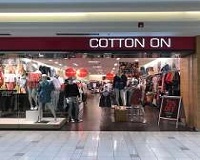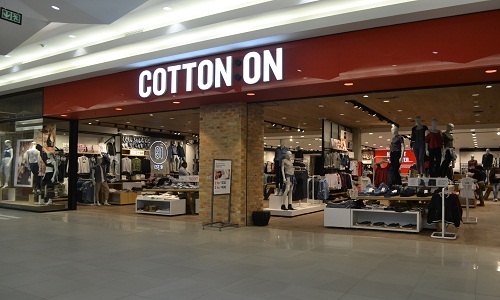"New Zealand has come under the scanner of faking ‘Made in NZ’ tag when a leading media house did some checking. Stats show, New Zealand imported 10.6 million cotton T-shirts from Bangladesh last year, with an average value of $2.95 each. Outdoor clothing firm Macpac moved its manufacturing from Christchurch to China, Vietnam and the Philippines in 2003. As Nadia Scott, Marketing Manager, Macpac, says the brand had to take the decision to move production overseas when global demand for its products began to outstrip what it could supply with a New Zealand labour force. They took the time to research options and assess alternatives, and found manufacturing partners who are highly skilled. They can produce volumes that the company is unable to match in New Zealand with the limited availability of skilled machinists."
 New Zealand has come under the scanner of faking ‘Made in NZ’ tag when a leading media house did some checking. Stats show, New Zealand imported 10.6 million cotton T-shirts from Bangladesh last year, with an average value of $2.95 each. Outdoor clothing firm Macpac moved its manufacturing from Christchurch to China, Vietnam and the Philippines in 2003. As Nadia Scott, Marketing Manager, Macpac, says the brand had to take the decision to move production overseas when global demand for its products began to outstrip what it could supply with a New Zealand labour force. They took the time to research options and assess alternatives, and found manufacturing partners who are highly skilled. They can produce volumes that the company is unable to match in New Zealand with the limited availability of skilled machinists.
New Zealand has come under the scanner of faking ‘Made in NZ’ tag when a leading media house did some checking. Stats show, New Zealand imported 10.6 million cotton T-shirts from Bangladesh last year, with an average value of $2.95 each. Outdoor clothing firm Macpac moved its manufacturing from Christchurch to China, Vietnam and the Philippines in 2003. As Nadia Scott, Marketing Manager, Macpac, says the brand had to take the decision to move production overseas when global demand for its products began to outstrip what it could supply with a New Zealand labour force. They took the time to research options and assess alternatives, and found manufacturing partners who are highly skilled. They can produce volumes that the company is unable to match in New Zealand with the limited availability of skilled machinists.
Justifying the tag, she added most manufacturing companies work with or own factories around the world, often with plants in multiple countries, however the company identifies with the market where its products are designed, and where its senior management is based, driving the company's strategy and direction.
Fashion designer Dame Trelise Cooper points out her fashion brand had been manufacturing garments in New Zealand for 35 years. Currently, Trelise Cooper makes most samples and small volume runs in New Zealand. They employ multiple contractors throughout the Auckland region and employ 120 staff in New Zealand, many of whom make garments in-house, pattern making, cutting, machining and hand finishing. Around 54 per cent of its clothing was manufactured in China, 32 per cent in New Zealand, 11 per cent in India, 3 per cent in South Korea and 0.01 per cent in Bangladesh.
Cooper makes most samples and small volume runs in New Zealand. They employ multiple contractors throughout the Auckland region and employ 120 staff in New Zealand, many of whom make garments in-house, pattern making, cutting, machining and hand finishing. Around 54 per cent of its clothing was manufactured in China, 32 per cent in New Zealand, 11 per cent in India, 3 per cent in South Korea and 0.01 per cent in Bangladesh.
Similarly Icebreaker’s most clothing factories are located in China but it also has some in Bangladesh, Vietnam, America and Italy. Boutique fashion brand Ricochet said its garments were made in Auckland by its design and production team, with the exception of its knitwear which is produced in China. A Ricochet spokeswoman said the company bought production back to New Zealand in 2009 when it purchased the company from previous owners. Under previous ownership, production was based offshore, but after taking over the brand in 2009, it bought the production back to New Zealand. Since then, they manufacture everything in New Zealand except knitwear.
Many brands, similar opinions
Australian fashion company Cotton On’s clothing is made in Bangladesh and China since inception. Clothing sold at its other retail brands Cotton On Kids, Cotton on Body, Supré and Factorie is also made in Bangladesh and China. A spokeswoman for Karen Walker said its garments were produced in China and New Zealand. It has six ‘ready to wear’ suppliers in China, located in Shanghai, Suzhou, Wuxi and the Zhejiang province and one in Auckland. According to Karen Walker, marketing manager, Jiali Yang, the company’s suppliers are boutique-sized and have between one and 94 employees each. They deliver premium product in small runs as desired.
Yang said many brands who produced locally and used the ‘Made in New Zealand’ tags thought their systems were ethical but many did not know where their fabrics and add-ons came from. Over the past two years, they have traced all 11 fabric mills that supply fabric to them and the brand will continue to only work with fabric mills that are traceable. Its fabrics were produced in China, Italy, France, New Zealand, Japan and Korea and its suppliers were prohibited from sourcing fabric from stock markets.
Designer Annah Stretton said between 70 and 80 per cent of its clothing was made in China. The company took manufacturing to China in 2007 before that, they were a completely ‘Made in NZ’ brand. According to her, manufacturing cost in China are very similar to New Zealand, in fact they are sometimes higher given the volatility of the US dollar, so this wasn't a cost thing for her, it was an availability challenge that they had to solve.
Handbag company Deadly Ponies, which employs 42 local workers, said its accessories were designed in its Auckland workroom and around 60 per cent of its products were manufactured in New Zealand, ‘dependent on the season’, and the rest in France, India, China and Italy. Steven Boyd, MD, Deadly Ponies, stated that certain machines are not available in New Zealand and also production volume restrictions compelled them to move offshore. Boyd felt that it was fair for companies to promote themselves as local if its products were manufactured overseas.












